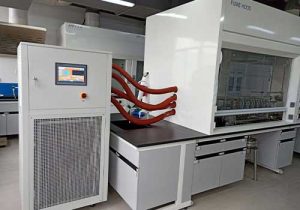water cooled chiller cop
Introduction to Constant Temperature Water Heaters in Laboratories
Constant temperature water heaters, or water baths, are essential for a variety of applications in scientific research and medical testing. These devices provide a stable temperature environment for processes such as sample incubation, chemical reactions, and temperature-sensitive experiments.

Mechanisms of Constant Temperature Water Heaters
These water heaters operate by using a heating element controlled by a thermostat or microprocessor. The system monitors the water temperature and activates the heating element as needed to maintain the set temperature. Some advanced models employ a PID (Proportional Integral Derivative) control system for more precise temperature regulation.
Types of Constant Temperature Water Heaters
There are several types of water heaters used in laboratories:
Static Water Baths: These are basic units that maintain a consistent temperature without circulation.
Circulating Water Baths: These models have a pump that circulates water, ensuring even temperature distribution.
Shaking Water Baths: Equipped with a platform that shakes or vibrates, ideal for mixing or aeration.
Operating a Water Bath
To operate a water bath, follow these general steps:

Fill the bath with an appropriate amount of water, ensuring that the water level is below the maximum fill line.
Set the desired temperature using the thermostat or digital control panel.
Turn on the bath and allow it to reach the set temperature, which is usually indicated by a change in the display or a light signal.
Place the samples in the bath, ensuring they are fully submerged.
Monitor the bath during operation to ensure it is functioning correctly.
Safety Considerations
When using a constant temperature water heater, safety is paramount. Users should:
Ensure the water bath is placed on a stable, heat-resistant surface.
Use only the recommended bath fluids to prevent corrosion or other damage.
Regularly check and maintain the water level to avoid dry heating, which can damage the heater.
Follow the manufacturer’s guidelines for cleaning and decontamination, especially if hazardous materials are involved.
Applications of Water Baths in the Laboratory
Water baths are used in a wide range of laboratory applications, including:

Incubation of Biological Samples: To provide a stable temperature for cell cultures or bacterial growth.
Chemical Reactions: To facilitate reactions that require precise temperature control.
Thermal Cycling: Used in processes like polymerase chain reaction (PCR), where samples are cycled through different temperatures.
Advantages and Limitations
Water baths offer several advantages, such as ease of use, cost-effectiveness, and the ability to heat multiple samples simultaneously. However, they also have limitations, including potential microbial growth if not properly maintained and the need for regular water changes.
Conclusion
Constant temperature water heaters are crucial for maintaining precise temperature conditions in laboratory settings. Understanding their mechanisms, types, applications, and safety considerations is vital for scientists and researchers to effectively utilize these heaters in their work. By adhering to best practices and safety protocols, laboratories can ensure the accuracy and efficiency of their experiments and processes.
Related recommendations
chiller layout
209Chiller Layout: A Comprehensive GuideIn the realm of cooling systems, a well - designed chiller layout is crucial for the efficient, reliable, and safe operation of chillers. Whether for commerci...
View detailsWhat is the Role of Brine in Low Temperature Chillers?
1482What is the Role of Brine in Low Temperature Chillers? The brine solution has a lower condensation temperature, so it can be often used in medium-temperature and low-temperature chillers to ...
View detailsrecirculating chiller india
488Recirculating Chillers in India: Technology and Market TrendsRecirculating chillers are essential in maintaining consistent temperatures in numerous industrial and scientific processes. In India, ...
View detailstesting of sensors
328IntroductionSensors are integral components in modern technology, enabling the measurement and detection of various physical, chemical, and biological quantities. From monitoring environmental co...
View details
 LNEYA Chiller
LNEYA Chiller





HelloPlease log in